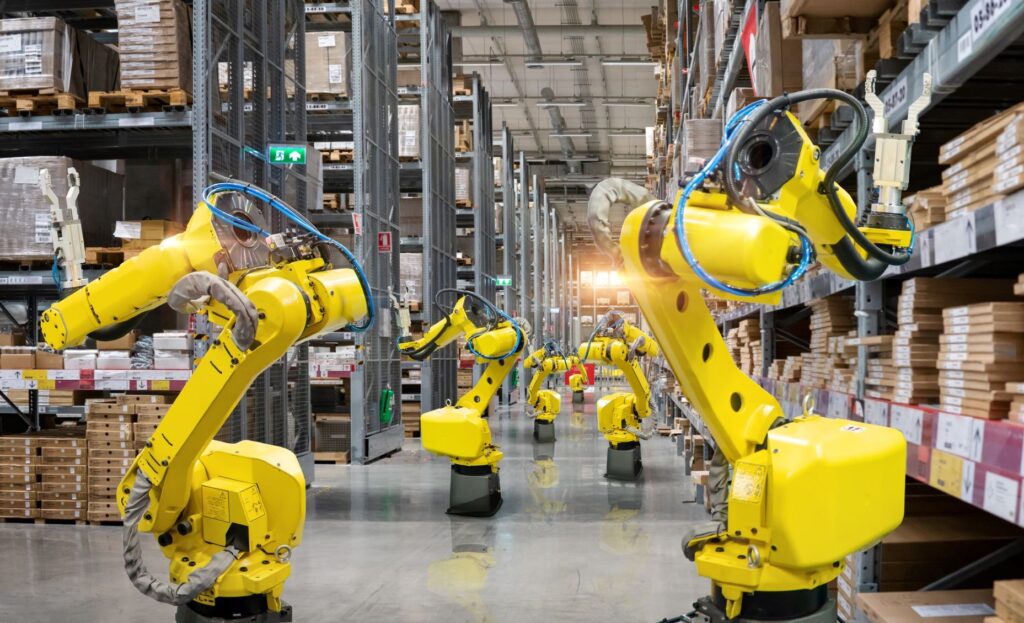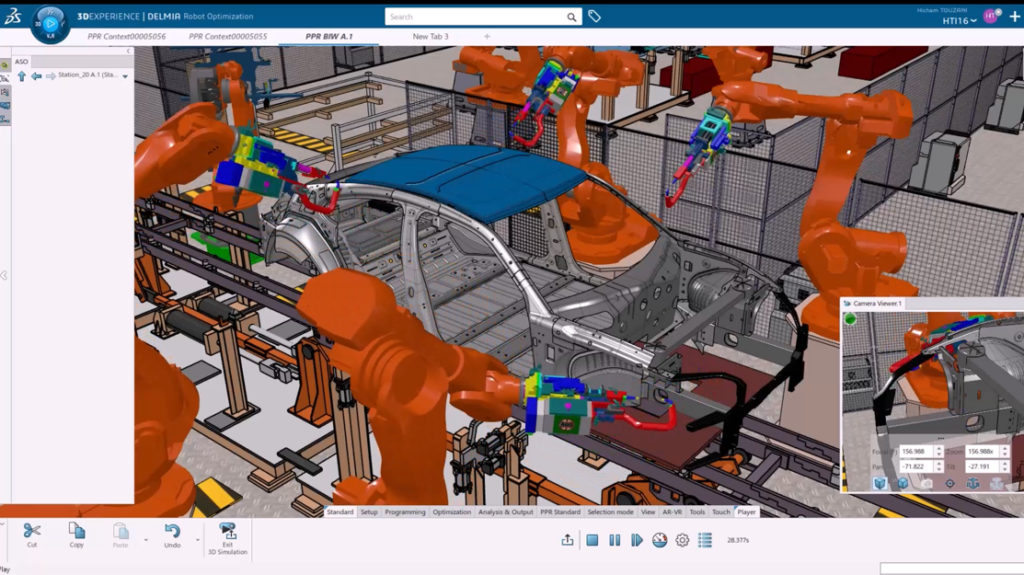Robotics is widely used in manufacturing across various industries. As such, using robots can automate tasks, increase efficiency, improve product quality, and enhance workplace safety. Robots are versatile machines capable of performing repetitive, precise, and physically demanding tasks, making them valuable assets in the manufacturing process.
Is Robotics a Necessity for Growth?

The manufacturing landscape changed vastly in recent years. The shift from mass production to mass customization translated into an industry now driven by modern day demands. Requests are for higher quality and more personalized products delivered at an escalating rate without the hefty price tag.
Furthermore, geopolitical events, climate-related disasters and public health crises added a layer of complexity to the situation, culminating in a global labor shortage.
This is due to a large portion of the workforce retiring and the younger generation seeking different lines of work with better conditions especially since there is an antiquated image of manufacturing.
Already dealing with a small labor pool, the problem is compounded by the required skillset. They need to:
- Possess experience or be trained in production
- Well-versed in operating equipment and safety procedures
- Be physically fit
In short, manufacturers today are dealing with an unprecedented problem that is twofold: hiring enough skilled manpower to stay afloat and driving productivity up across their value chain to remain competitive in an increasingly complex environment.
The Rise of Robotics in Manufacturing
Best-in-class manufacturers have found the solution to this conundrum in robots as their abilities run the gamut of production needs, which include:
- Sorting
- Pick and place
- Packaging
- Material handling
- Painting
- Drilling
- Riveting
- Spot welding
- Arc welding
- Polishing
The opportunities are endless as robots execute the job immediately after being taught once. They also do not require breaks in between hours. Manufacturers need only identify the various ways they can integrate them into their operations, which will decrease their dependency on manpower significantly.
Not to mention, in an industry with such high turnover rates, automation puts an end to the vicious cycle of hiring, training, re-hiring and re-training talents.
Navigating the Complexities of Robotics
While there are clear advantages of speed, cost reduction and accuracy when it comes to implementing robots, it does come with its set of challenges — specifically for robotic workcell programmers who struggle with delivering programs that work right the first time.
Often, providers must integrate their robots on production lines that include robots from other suppliers or integrate those from multiple suppliers depending on customer requests. However, programming numerous systems is exceedingly complex on the shop floor.
Besides this, with multiple variables such as changes in products, processes or tool designs, programmers have no way of knowing if their programs can be executed flawlessly without a physical run on the shop floor.
This can quickly turn into a hands-on trial-and-error process as product designers and tool builder develop fixes—leading to downtime which can delay the entire schedule and incur exponential costs.
Adding to the costs is the high risk of accidents and collisions that may take place during validation on the shop floor. This sometimes stems from programmers lacking first-hand knowledge of the physical process and how the tool operates.
Beyond that, programmers need to equalize the task load among multiple robots to ensure none are being underutilized, which is an activity that can only be accomplished when the entire system is built and running.
Bridging the Gaps with DELMIA Robotics

That’s why industry leaders are moving programming off the shop floor to a virtual environment. DELMIA Robotics software enables manufacturers to validate their production systems and robot programming within a 3D collaborative environment before physical resources are deployed.
It enables companies to customize enterprise data and integrate it into a single source of truth. With this smart solution, programmers no longer need to wait until the tools are built in the real world to start creating and innovating. They can then take it a step further with DELMIA’s simulation capabilities to validate the entire process.
This means that production on the shop floor can continue seamlessly and simultaneously as new programs are being authored and tested.
Working from extensive libraries of robots and controllers, programmers can position resources, program individual robots, debug robot motion trajectories and orchestrate workcell sequences between robots and other resources.
This enables manufacturers to unlock:
- Faster functional production lines
- Better resource utilization
- Improved process validation
- Optimal workcell operation
- Validated robot cycle time
- Reduced capital investment
- Reduced shop floor fixes
- Better understanding of tool operation
- Production-ready robot programs
- Improved collaboration across disciplines
- Increased workcell throughput
The Future of Robotics in Manufacturing
With a huge disconnect between the number of people leaving the workforce and those entering coupled with the increasing pressure of customer demands — automation is the future.
Manufacturers who are unwilling to embrace automation but wish to remain competitive would need to hire a very skilled workforce that would enable them to produce the highest quality products with the least amount of effort.
However, this would mean chasing talent across global borders. In the long run, it is not a sustainable solution.
Therefore, those who wish to remain ahead of the curve and forge business continuity must not only automate, but they must also leverage solutions such as DELMIA to maximize the potential of their robots for optimal output. Investing in robotics is no longer just a necessity for growth, but a necessity for survival in an ever-evolving landscape.
Interested in learning more about how you can unlock the full benefits of robotics in manufacturing to sharpen competitive edge? Download 3D Robot Programming Reduces Costs and Streamlines Production or Visit DELMIA’s Virtual Factory & Robotics Community

